Discover the secrets to growing asparagus in your garden! Learn how to grow asparagus from seed or crowns for a bountiful harvest in spring.
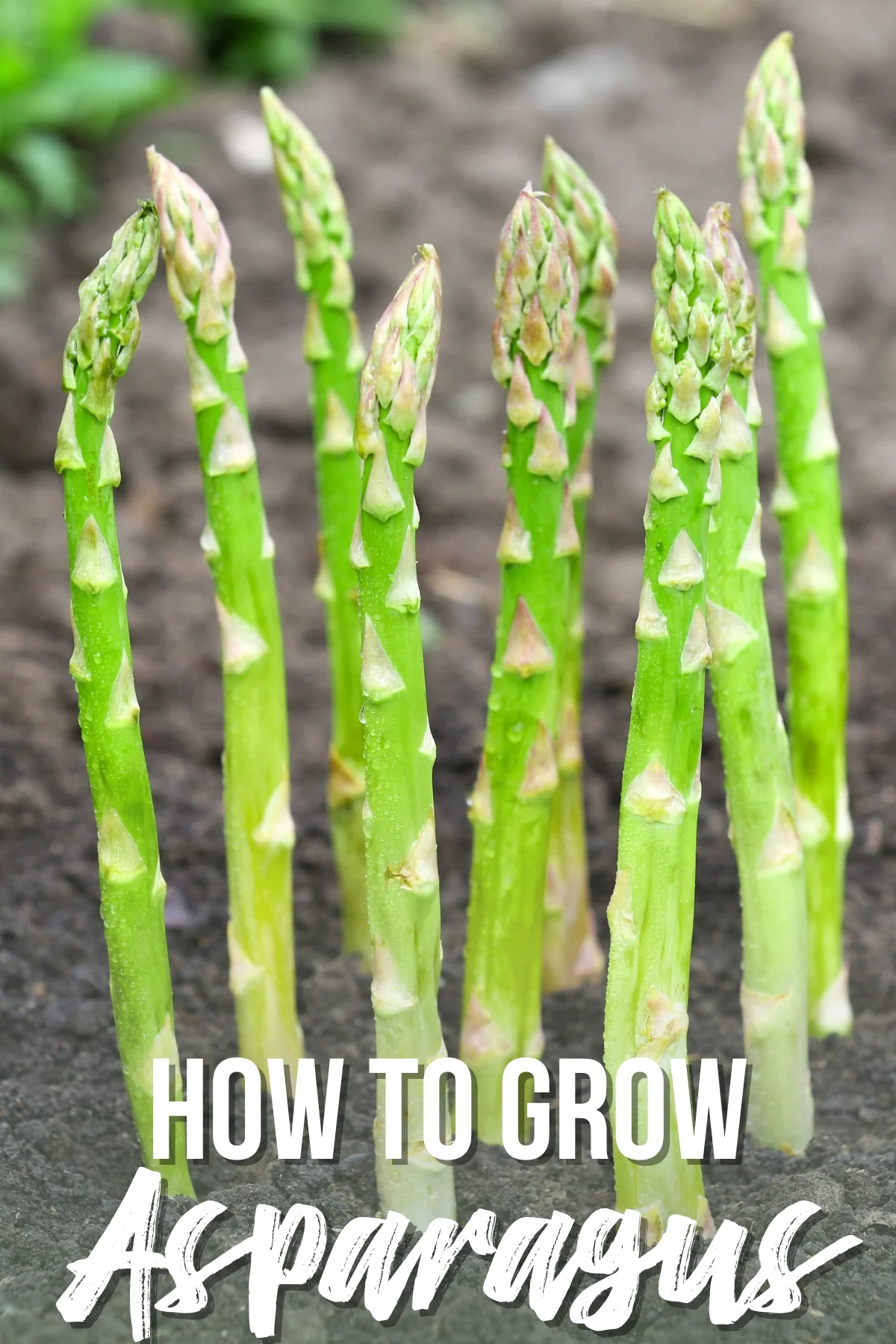
If you're looking for an early-to-harvest vegetable for the garden, it's asparagus. The fast-growing edible spears pop up from root crowns in spring, providing a tender, tasty, and nutritious green vegetable.
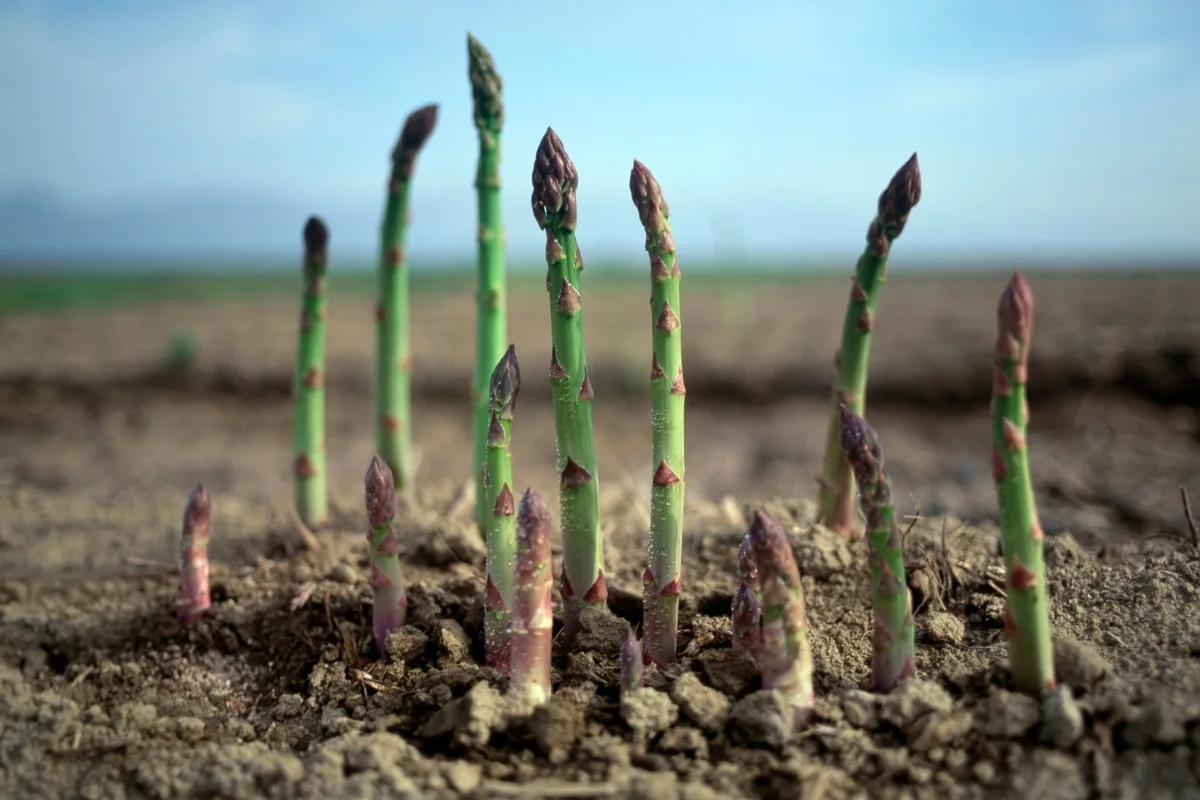
Because asparagus is a perennial, you can plant it once and harvest shoots for the next 10 to 15 years! At the end of each season, just leave some spears to mature and grow into tall stems with lacy leaves.
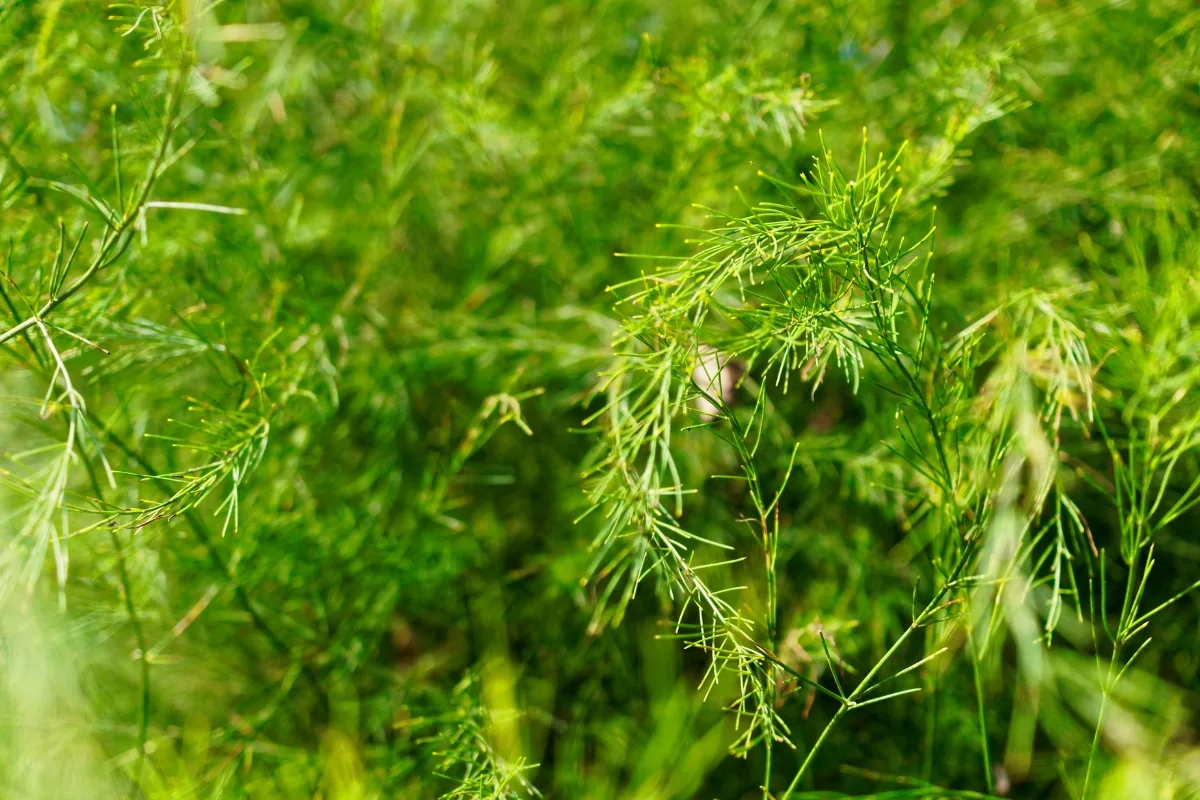
If you've been intimidated by tales of finicky plants, unforgiving growing conditions, or seemingly endless waiting periods, this guide is for you! I'll show you how to grow asparagus from seed or crowns so you can harvest every spring!
This post contains affiliate links for your convenience. Purchases made through these links may earn me a small commission at no additional cost to you.
Growing Asparagus at a Glance
| Plant Type | Perennial vegetable |
| Timing | Start seeds indoors 12-14 weeks before last frost date |
| Soil Type | Rich, well-drained, pH 6.5-7.5 |
| Climate | Temperate; requires winter dormancy |
| Sunlight | Full sun preferred |
| Seeding Depth | ½-inch deep |
| Plant Spacing | Thin seedlings to about 12-18 inches apart |
| Row Spacing | 3-4 feet between rows |
| Watering | Consistent moisture needed, especially in first year |
| Fertilization | Balanced fertilizer at planting; high-nitrogen annually |
| Time to Harvest | 3-4 years if grown from seed 2-3 years if grown from crowns |
Asparagus Cultivars
There are many asparagus varieties, including hybrids bred for specific traits. You can find ones that have large spears, purple spears, heat, and pest-resistant types, early and late maturity dates, and more!

Some of the most popular asparagus types include:
- 'Jersey Giant,' a hybrid with primarily male plants, above-average pest resistance but low heat tolerance.
- 'Conover's Colossal' is an heirloom variety you'll have to start from seed, but it's an excellent producer of large, green spears.
- 'Grande Hybrid' is a good choice if you want a cultivar with both disease and heat resistance.
- 'Jersey Knight' has green spears and mostly male plants with heat tolerance.
- 'Jersey Supreme' is an early producer with excellent disease resistance.
- 'Purple Passion' is one of several purple-spear asparagus types.
Asparagus Seeds vs Crowns
Don't start from seed if you want home-grown asparagus as soon as possible. It takes at least a year longer to get harvestable spears compared to starting from crowns.
Crowns quickly produce plants in the first year and enough spears to eat by the second year. So if you buy all male crowns of a fast-growing hybrid cultivar, you can have lots of fresh asparagus as soon as possible.

However, there are a few reasons why you might want to grow asparagus from seed:
- Starting from seeds is less expensive than purchasing crowns.
- Direct sowing seeds in a large asparagus bed takes less labor than planting crowns.
- When you start from seed, you can ensure your crop is entirely organic.
- Seeds allow you to grow cultivars, like heirloom varieties, not available as crowns.
How to Start Asparagus Seeds Indoors
Start the seeds approximately four months before you want to transplant seedlings in the spring. You can also grow asparagus seedlings in pots for a year before planting them.
Sow the seeds into sterile seed starting soil mix in clean seed trays or individual pots. Plant them about ½ inch deep, and keep the containers moist and in full sun during the day until germination in about three weeks.
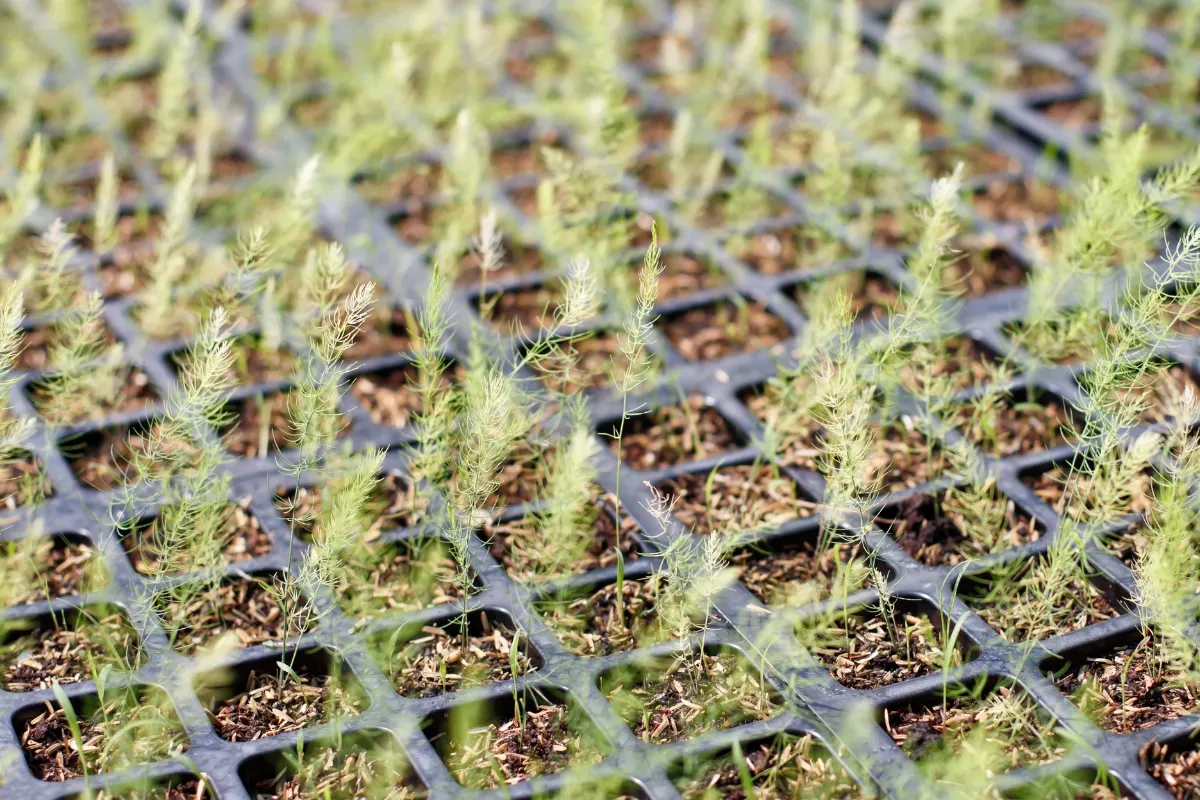
The optimum temperature for fast germination is 75 to 85°F, so you can use a heat mat to speed up the process. But they come up in soil temperatures down to 60°F, although more slowly. Once the seedlings sprout, they can tolerate temperatures of 50 to 60°F.
As the seedlings grow, water them weekly with a dilute fish emulsion fertilizer. A dilute solution is crucial because too much nitrogen can result in abundant vegetative growth at the expense of well-developed roots.
Planting Asparagus in the Garden
Asparagus takes up more space than most garden crops. Whether you are starting from crowns or seedlings, allot two square feet of growing area per plant, which yields about half a pound of spears per plant each spring after plants mature.
Planting Asparagus Crowns
Choose a site for your asparagus bed with full sun and fertile, well-draining soil. Dig trenches 16 inches wide, 6 inches deep, and 3 to 4 feet apart.
Apply a band of bone meal or 5-10-10 fertilizer to the bottom of the trench and stir it into the soil. Plant the crowns at the bottom of the channel with the bud side facing upward, and the roots spread out to the sides.
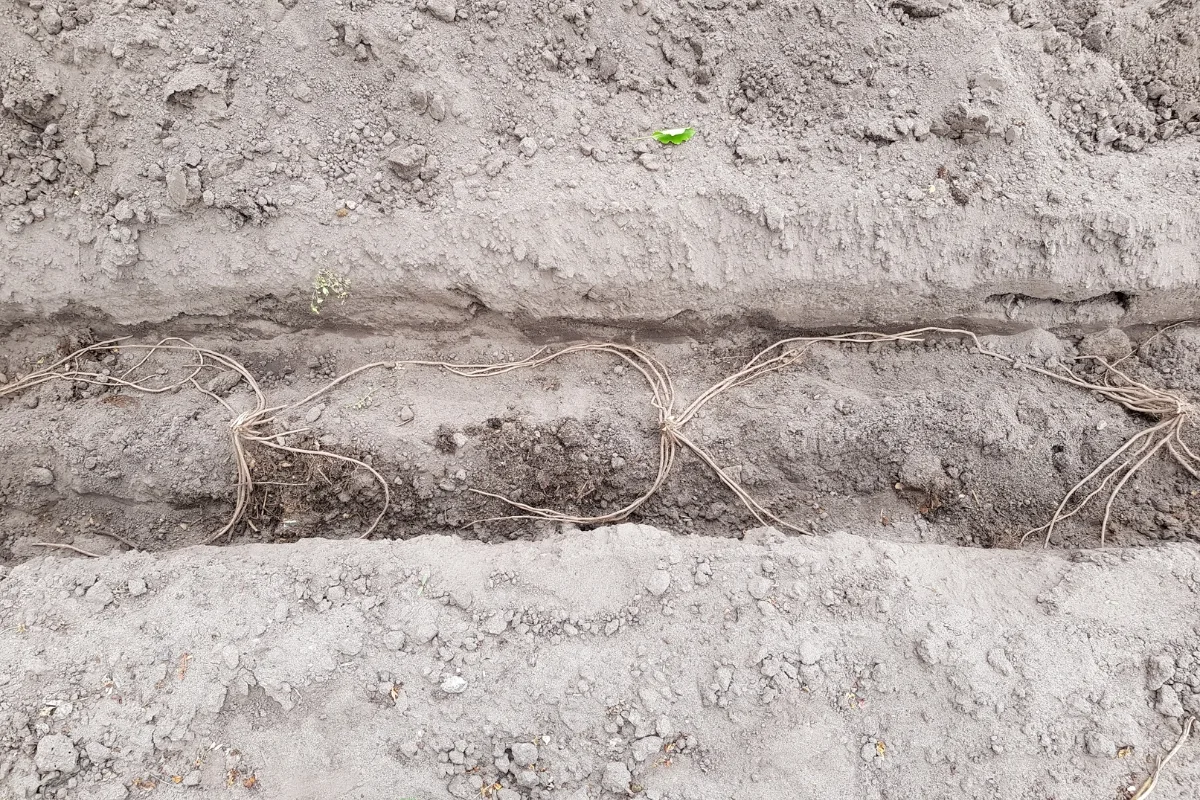
In sandy soil, cover the crowns with eight inches of dirt. In heavy clay soil, cover them about six inches deep. Allow the top inch of the trench to remain unfilled. Water the ground thoroughly after planting and keep it moist as the plants grow.
Here's a great video that shows you how to plant asparagus crowns in your garden.
Planting Asparagus Seedlings
You can plant asparagus seedlings about three to four months after the seeds germinate and all danger of frost is past.
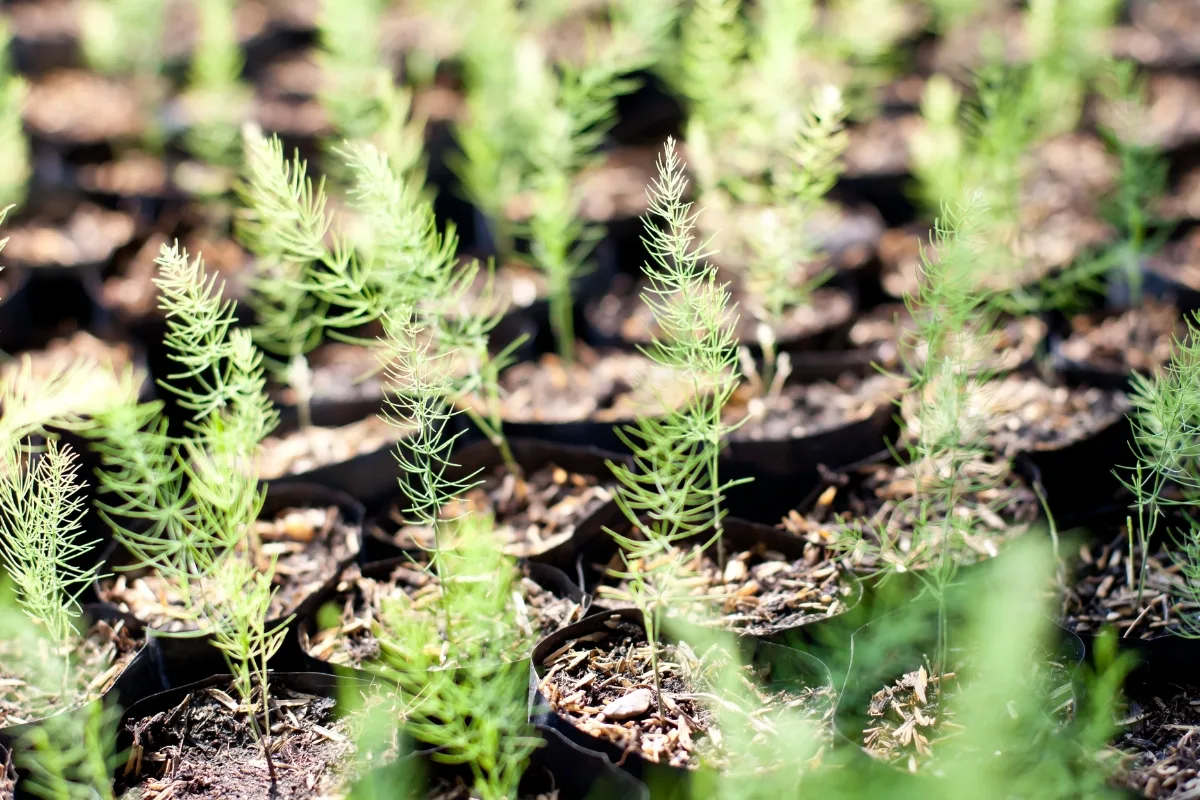
Dig a trench as described above, but make mounds about 16 inches apart at the bottom. Plant the seedlings into the center of these mounds, setting them slightly deeper into the soil than they were in the pots. Water after planting and as needed while the plants grow.
Caring for Asparagus Plants
Whether starting from seedlings or crowns, resist the urge to harvest spears the first year for crowns and two to three years for plants started from seed. The reason is that the plants need as much vegetative growth as possible to nourish the roots until they mature.
Once a harvestable crop of spears emerges, they can grow up to two inches per day, so check and harvest the bed daily in spring to get the tastiest and most tender shoots.

Asparagus has separate male and female plants. However, male plants are most desirable for harvesting spears. The reason is that female plants divert some of their energy to produce berries, making their spears smaller and less tender.
When the harvest ends in 6 to 8 weeks, continue caring for the fern-like plants so they can recharge for next year's crop. Fertilize in the spring during the first three years and in July after that. Weed carefully to avoid disturbing the roots.
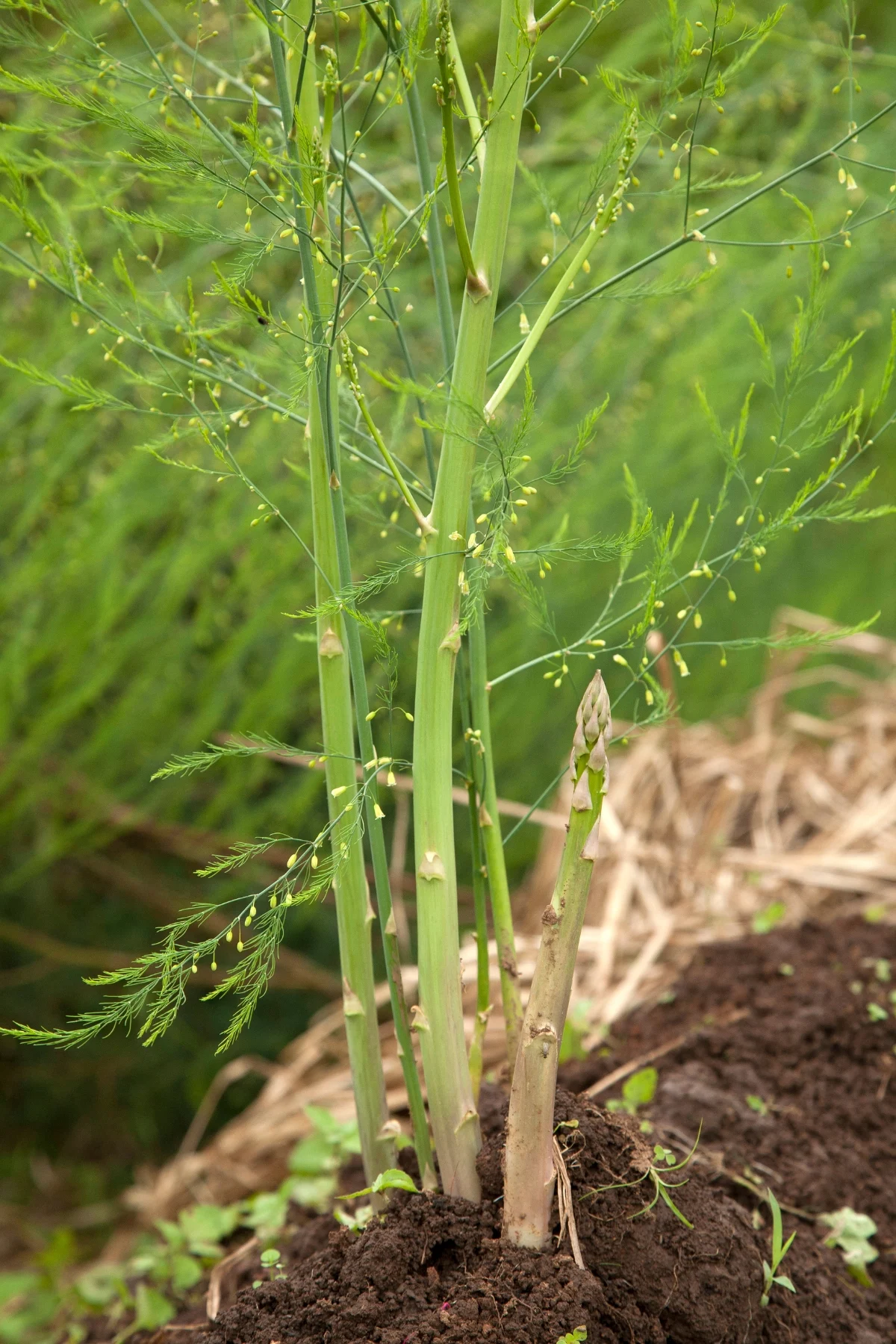
Water the plants regularly during the growing season, and reduce it in fall when the ferns die back. In addition, water the plants during extended dry periods in winter, cut back the foliage in late fall, and put a layer of mulch over the bed.
Among the most damaging pests of asparagus are two species of asparagus beetle: the common asparagus beetle and the spotted asparagus beetle. Consider companion planting asparagus with other vegetables that drive away these pests.
While growing asparagus from seed can be a challenge, you'll be rewarded with a bountiful harvest for years to come! It's always exciting to see those spears popping out of the ground in spring, ready for your dinner plate!
Check out these other vegetables you can grow from seed!

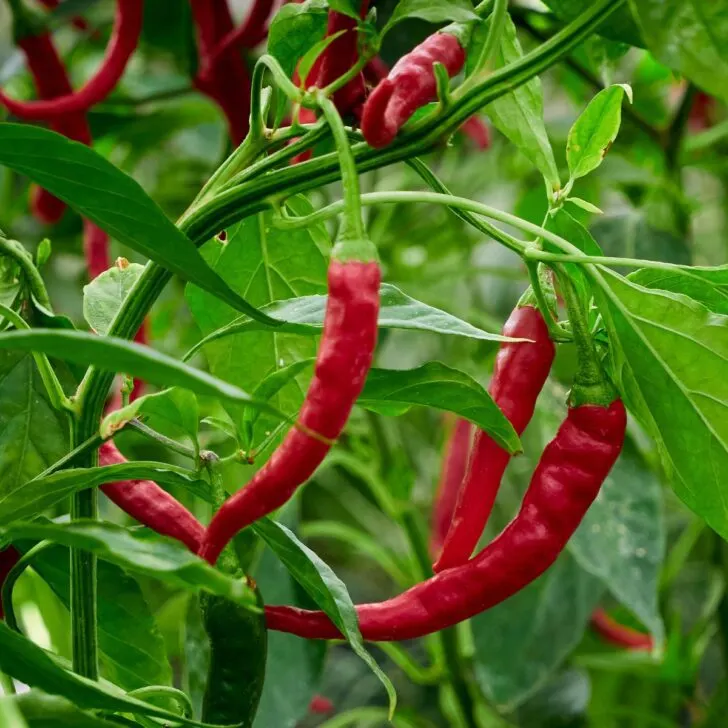
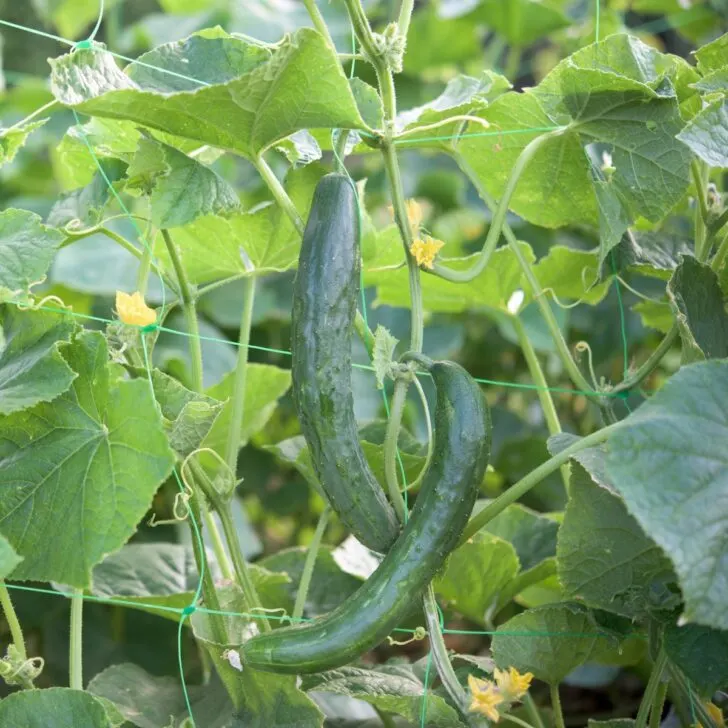
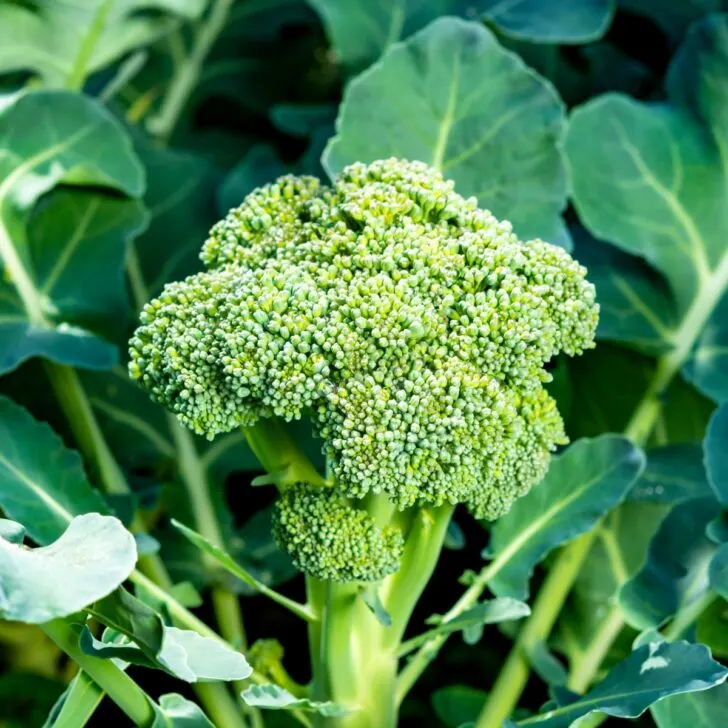
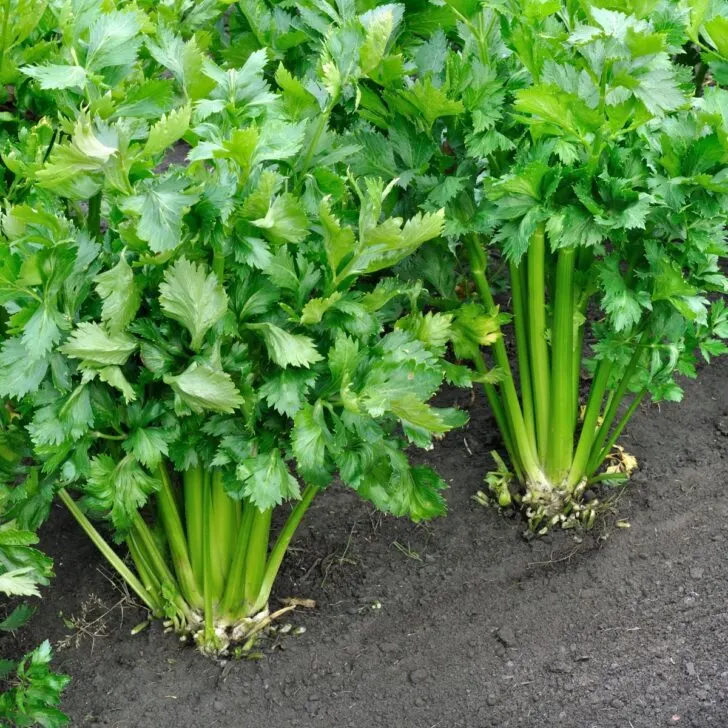


Mary Poll
Sunday 9th of April 2023
would be nice to have a video showing step by step using the crown.
Vineta Jackson
Tuesday 11th of April 2023
I added a great video showing the whole process!